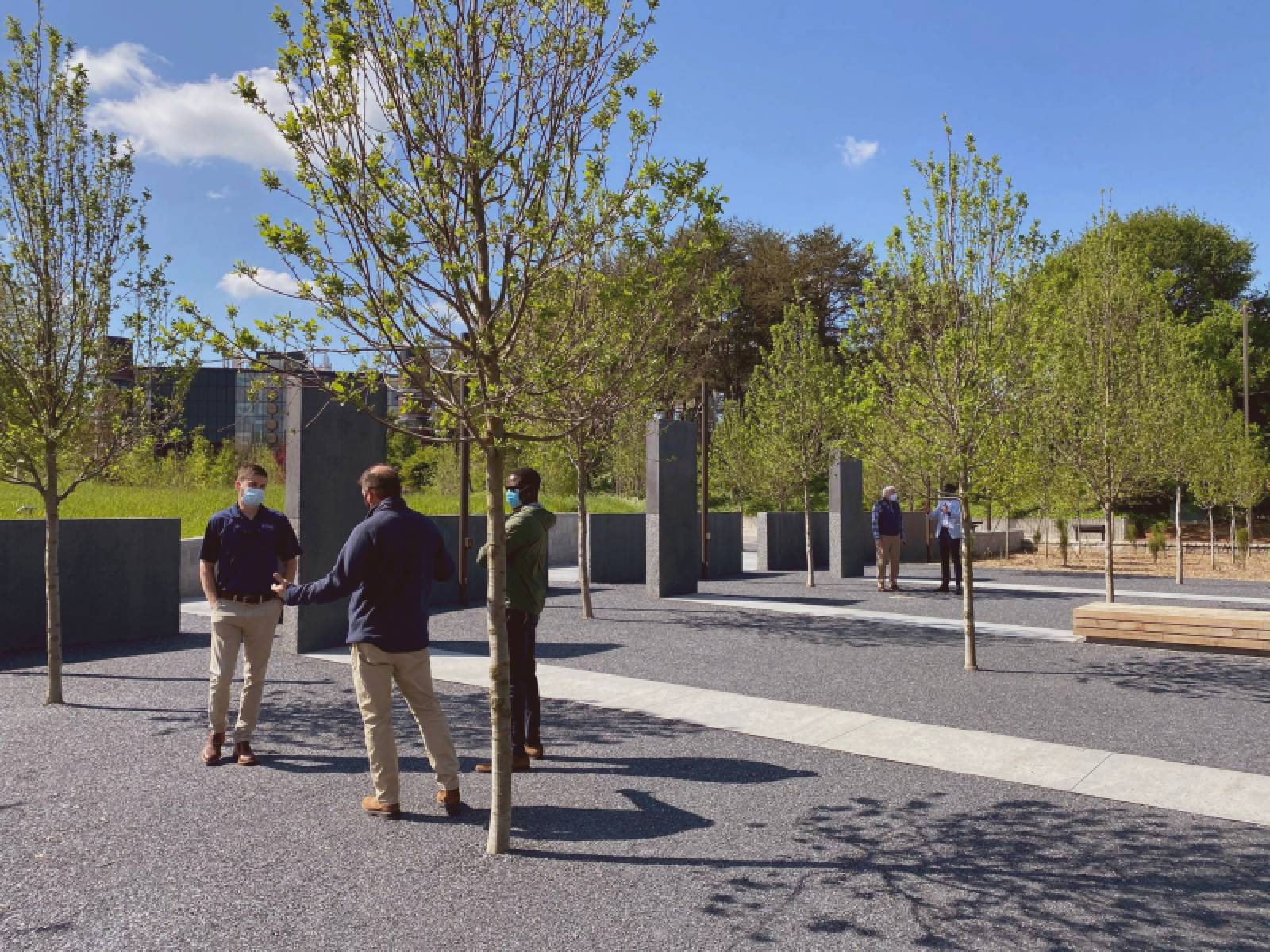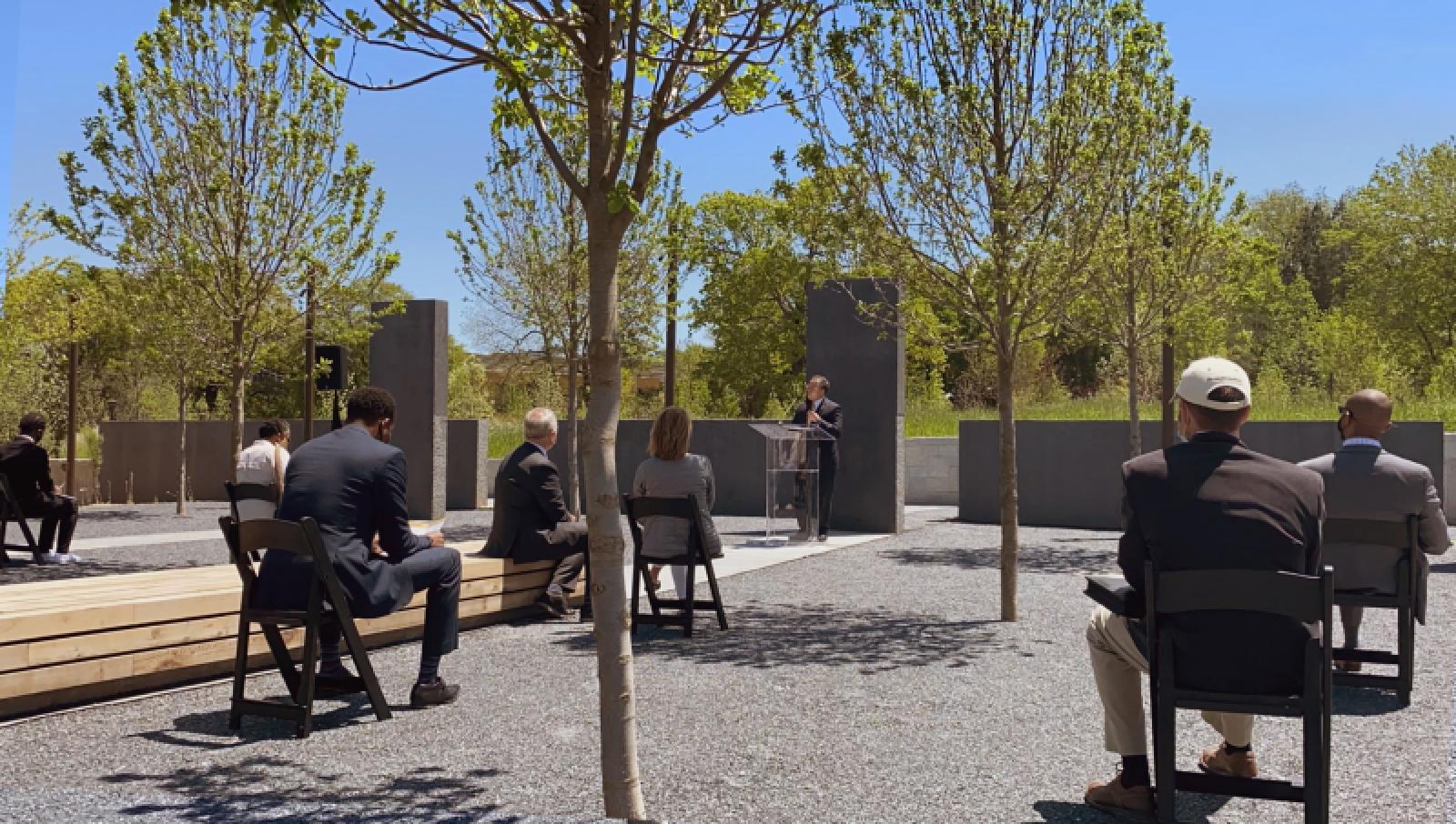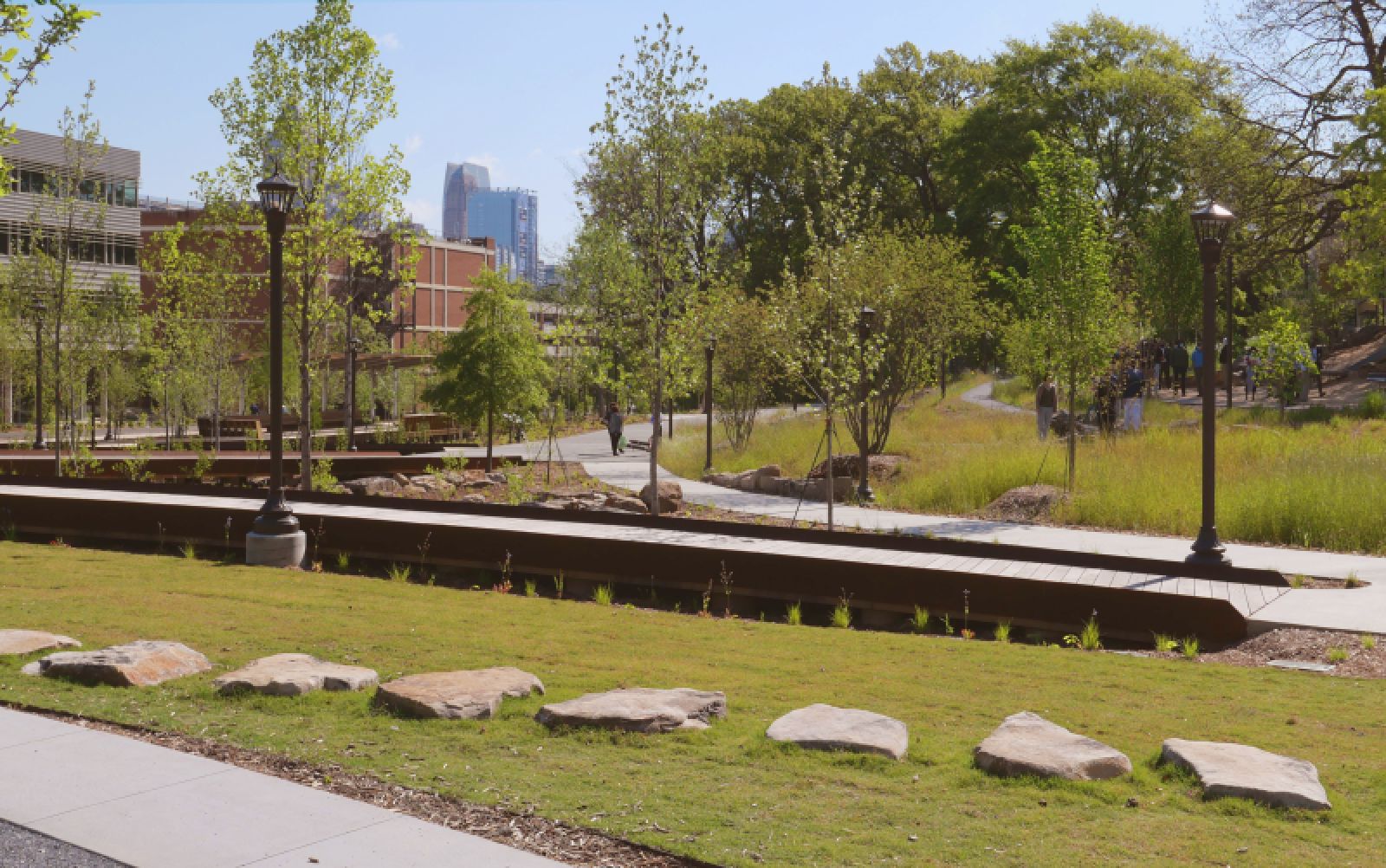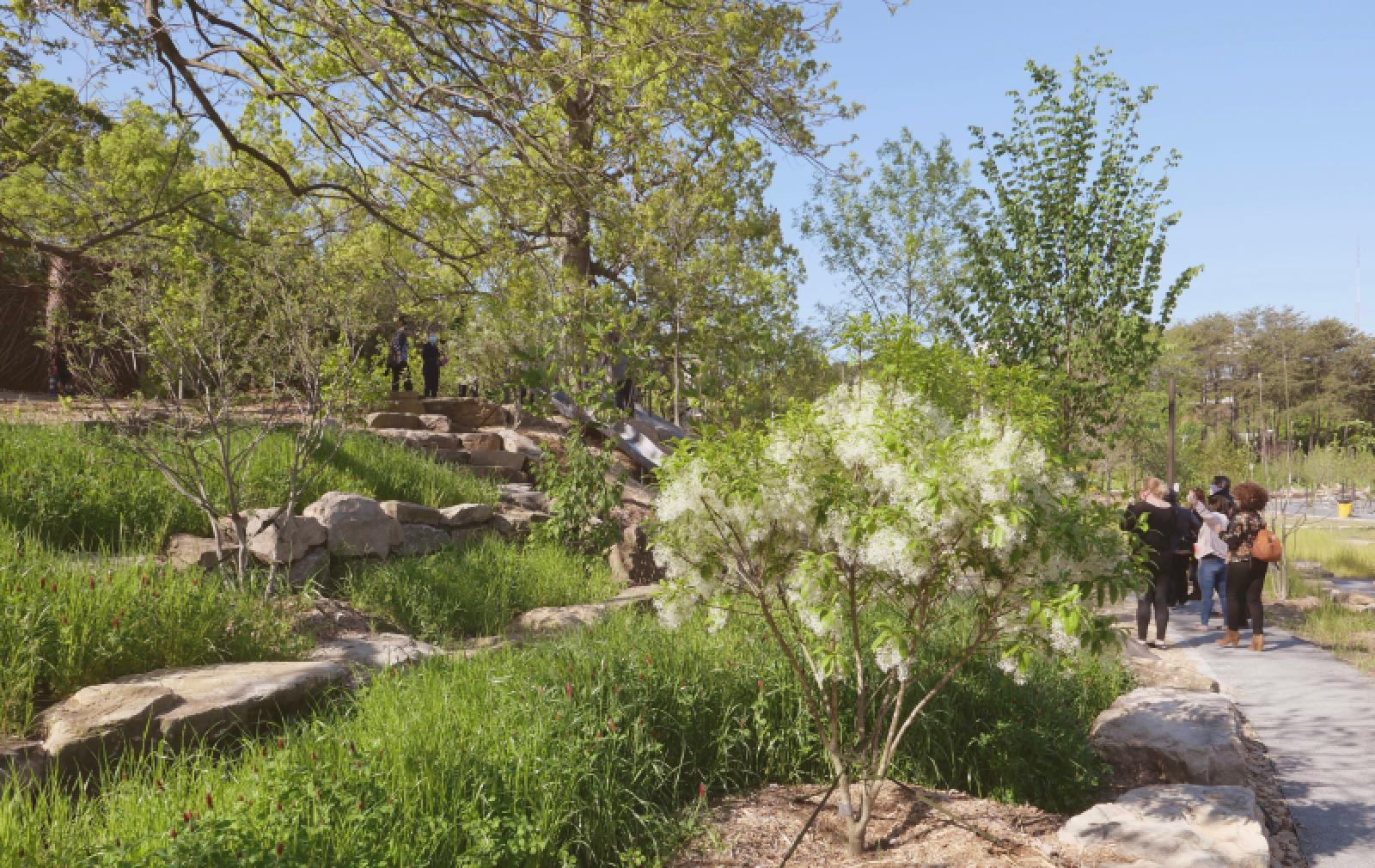During the celebration of the Earth Day it was inaugurated EcoCommons – a seven-acre designed landscape that manifests the aspirations of the Institute’s Engineered Biosystems Building Sector Plan and a crucial node for ecological function, education, and community health, both physical and mental. Designed by Nelson Byrd Woltz Landscape Architects, the largest standalone landscape architecture project ever undertaken by the Georgia Tech is an ecological and pedagogical tool, as well daylighting the difficult, forgotten history of the site.
The overarching EcoCommons Project envisions 80 acres of green space across campus that follow what were the original naturally occurring stream paths of this region before urbanization. This seven-acre portion of the project located at the northeast corner of Ferst Drive and Hemphill Avenue is a site formerly dominated by pavement and buildings where history and ecologies had been erased. The design reintegrates functional topography and water flow to the site to support three living landscape typologies to meet the Georgia Tech’s goals of Learn, Engage and Reflect – a learning deck for classes and research, an area for play and relaxation, and a contemplative grove.
The three zones are designed to create opportunities for distinct plantings and different sensory experiences. Primarily a woodland landscape, the plantings reflect the native Georgia Piedmont ecologies and eventually will provide 75% canopy coverage for the site. The site supports the research pedagogy of the institution. Environmental monitoring technology provides quantitative insights into the site’s functionality. The site will also include audio recording systems for habitat monitoring, along with sensors for monitoring air quality and temperature, soil percolation, and water quality.
The EcoCommons is also designed to reduce stormwater runoff by capturing or reusing 50% of the rainfall that falls on the site. It accommodates more than 60,000 cubic feet of stormwater infiltration and captures into cisterns – resulting in a reduction of the stormwater entering the city’s sewer system by millions of gallons. The site is designed for ongoing water absorption with captured water used to irrigate the site. In addition to its ecological and scientific purpose, the EcoCommons highlights a significant story of the site.

Photo © Nelson Byrd Woltz
During the research and site investigation phase, the NBW team learned that the site had been home to the Pickrick Diner, an important site in civil rights history. On July 3, 1964, one day after the passing of the landmark Civil Rights Act, George Willis Jr, Albert Lee Dunn, and Woodrow T. Wilson, three Black students from the Atlanta Interdenominational Theological Seminary, asked to be seated in this all-white establishment in a test of the new civil rights laws. As tensions mounted, the owner of the Diner, Lester Maddox, incited a mob threatening violence against the students, who then departed peaceably.
While not unique to the region, the events at the site brought the issues of racism and segregation into clear focus. The event led to the first federal lawsuit, filed by attorney Constance Baker Motley, under the 1964 civil rights law Willis v Pickrick Restaurant and upheld the new civil rights law. Maddox elected to close the establishment rather than integrate it. These events manifest the agency, bravery, and strategic brilliance of Civil Rights activists and their resultant successes.

Photo © Nelson Byrd Woltz
When approaching the EcoCommons from Hemphill Avenue to the west, a wall guides visitors into the former restaurant site through an arcing grove of tupelo or black gum (Nyssa sylvatica). Three monumental wall sections, offset from the entry wall provide access to the contemplative site. The pillars, solid and strong in their height, recall the stand that the three students, Willis Jr, Dunn, and Wilson, took against injustice. These three forms align with wide platform benches and, beyond, three evergreen longleaf pines.
The longleaf pines, the only three on the site, sit inside a taut plane of native grasses carved out of the surrounding oak-pine forest and are held by the steel walls that trace the exact foundations of this important Civil Rights Movement site. The design team committed to honoring the bravery of these students hoping to provide a space for the community to confront intolerance and allow for contemplation, conversation, and healing. Source by Nelson Byrd Woltz and photos Courtesy KUBANY.








